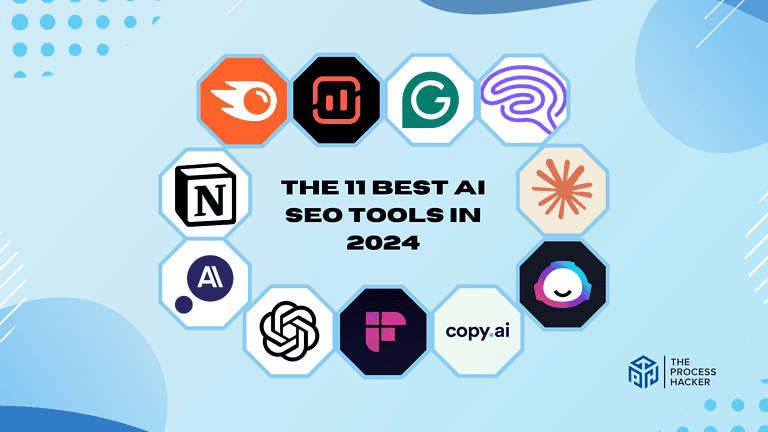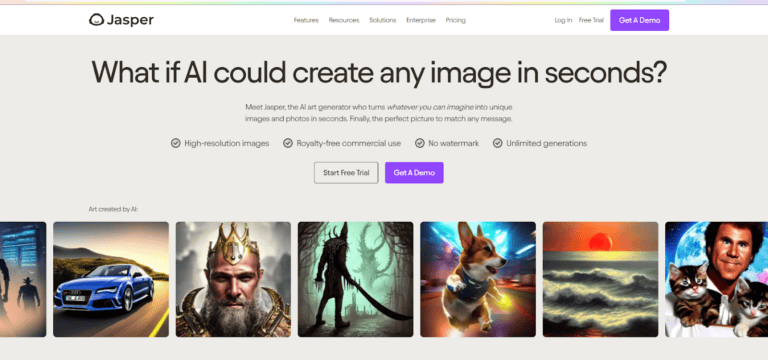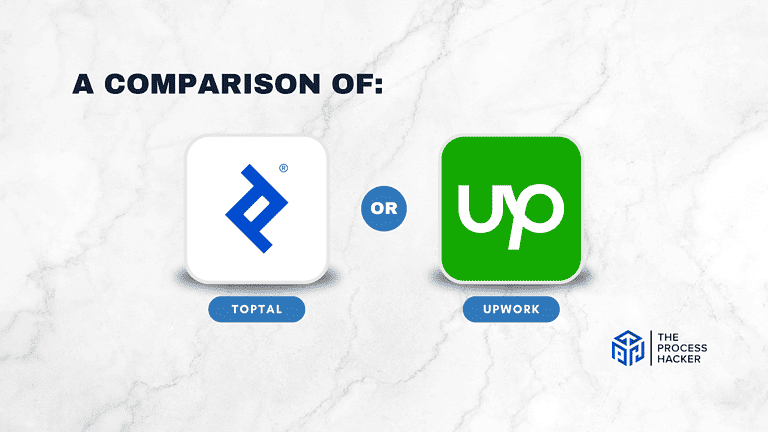The 13 Ways to Build an Audience
Imagine having a group of people who are excited about what you do.
They eagerly await your next blog post, video, or product launch. They trust your recommendations and feel like you genuinely understand them. That’s the power of a loyal audience.
I’ve been building audiences for years, one blog post at a time, and I know it can feel overwhelming to get started. But I can promise you this – the journey is worth it! Building a genuine connection with your audience is one of the most fulfilling and rewarding things you’ll do.
And now, it’s your turn. With this list of insights and strategies, the path to building your audience is clearer than ever. But remember, knowledge alone isn’t enough—taking that first step, followed by another and another, will genuinely make the difference.
Ready to begin? Here are the ways to build your audience, each a stepping stone to achieving the connection and engagement you seek.
What Are the Ways to Build an Audience?
Building an audience is akin to crafting a masterpiece; it requires patience, skill, and creativity. It is as if you’re stepping into a studio, where instead of paintbrushes and clay, your tools are content, engagement, and strategy.
This unique process is designed to gather a crowd and cultivate a community that resonates with your voice and values.
Transitioning into the full tutorial, consider this a guided tour through the artistry of audience building. Each step is tailored to make a direct connection with your future followers, transforming your platform’s empty canvas into a vibrant community buzzing with interaction.
Prepare to unfold the secrets that will draw people to your side, ensuring they’re not just passersby but engaged participants in the story you’re telling.
#1) Identify Your Target Audience
Picture this: you’re creating amazing content, but it feels like talking to an empty room. The reason? You haven’t truly taken the time to understand who you want to reach.
The first step in building an audience is like setting the foundation for a house; it’s essential, and everything else hinges on it. You need to know exactly who you’re talking to.
This isn’t about casting a wide net and hoping for the best. It’s about finding your tribe, the people who will listen, engage, and resonate with your words.
Before crafting content or picking platforms, you need to ask yourself these questions:
- What are their biggest challenges?
- What kind of information do they crave?
- Where do they hang out online?
- What are their interests?
- How old are they?
Once you have a clear picture of your audience, creating content that speaks directly to them becomes simpler.
Use social media platforms, forums, and online communities to listen in on conversations and understand your target audience’s language, pain points, and aspirations. Surveys and direct feedback can also be invaluable tools in refining your understanding and ensuring that you’re on the right track.
Remember, the goal here is to connect with your audience personally, making them feel seen and heard. The more specific you get, the easier it will be to create content that resonates and attracts the right people. It’s like having a secret weapon for audience building!
#2) Create Content That Provides Value
Think about the last time you followed someone new online. What made you hit that button? Chances are, they offered something valuable – knowledge, entertainment, or inspiration.
To build a loyal audience, you need to provide value consistently. Here’s how:
- Solve problems: What are the pain points your audience faces? Create content that offers solutions.
- Teach something new: Share your expertise and offer tutorials or in-depth guides.
- Tell engaging stories: People connect with stories. Weave relatable narratives into your content.
Your content should serve as a bridge between their challenges and the solutions they seek. Whether it’s blogs, videos, podcasts, or social media posts, ensure each piece is designed to inform, inspire, or entertain based on what your audience values most.
A robust approach to providing value is to teach something new or offer a fresh perspective on familiar topics. Utilize your unique insights and experiences to create unique content.
When your content consistently adds value, you don’t just build an audience; you build a loyal community that looks forward to every word you share.
#3) Use Social Media Strategically
Social media can be a powerful tool for connecting with your audience, but it can also be easy to feel overwhelmed. Like a gardener knows the right time to plant seeds, you need to know the when, where, and how of interacting with your audience through social media marketing.
Here’s how to approach social media platforms strategically:
- Pick your platforms wisely: Don’t try to be everywhere at once. Focus on the platforms where your ideal audience hangs out.
- Be consistent: Show up regularly with valuable content. Consistency builds trust.
- Engage and interact: Social media is a conversation! Respond to comments, ask questions, and participate in discussions.
Here’s a breakdown of popular platforms and the niches they generally work best for:
Broad Appeal Social Media Platforms
- Facebook: Still the largest social network, good for reaching a wide audience, especially older demographics. It works for many niches, but organic reach can be limited.
- Instagram: Visually-driven, popular with younger audiences. It’s great for lifestyle, beauty, fashion, food, travel, and creative businesses.
- YouTube: The king of video content, which is excellent for tutorials, reviews, vlogs, and any niche where visual explanations are valuable.
- TikTok: Short-form video platform exploding in popularity. It’s ideal for quick, engaging content and reaching a younger demographic.
Niche-Specific Social Media Platforms
- Pinterest: Visual search engine perfect for DIY, recipes, home decor, fashion inspiration. Heavily female-skewed audience.
- Twitter: Fast-paced, excellent for real-time conversations, news, thought leadership, and humor.
- LinkedIn: The professional network that is excellent for B2B, career development, industry news, and establishing yourself as an expert.
- Twitch: This live-streaming platform originally focused on gaming but has expanded into other areas like music, talk shows, and creative content.
- Goodreads: Social network for book lovers. Perfect for authors, book reviewers, and anyone targeting a reading-focused audience.
Unless you understand social media is about building relationships and not just blasting out promotional messages, that’s the only time you’ll make the most out of them. That’s because blasting out promos on social media is like leaving a stack of flyers in an empty room.
Be authentic and focus on connecting with people – that’s how you’ll see actual results.
#4) Grow A YouTube Channel
Having a YouTube channel isn’t just about uploading videos; it’s about storytelling in a way that captivates and keeps viewers coming back for more. Imagine each video as a chapter in your book, drawing readers deeper into your narrative.
Clarity on what your channel stands for is crucial. Define your niche and ensure it aligns with your target audience’s interests. This focus will not only help you create consistent content but also attract an audience interested in what you have to offer.
Are you a drone hobbyist? If so, you can start uploading your fly times or tips on YouTube videos.
Or perhaps you’re a fitness junkie? You can create a channel dedicated to your favorite exercises and meal plans.
The best way to start with YouTube is to follow your passion. It gives you more leverage as you already know many things about it. You can think of a topic to content even when your eyes are closed.
But not all people have a specific passion, and that’s okay! You can start researching and finding a topic you’re always curious about.
Like anything worthwhile, creating a YouTube channel takes dedication and strategy. Here’s how to make your channel shine:
- Nail your niche: What are you passionate and knowledgeable about? The more focused your channel is, the easier it will be to attract the right viewers.
- Optimize your videos: Use relevant keywords in titles, descriptions, and tags to help people find your content.
- Thumbnails that pop: Design eye-catching thumbnails that make people want to click.
- Engage with your community: Respond to comments, answer questions, and foster a sense of connection with your viewers.
Remember: Consistency is key on YouTube. Try to upload regularly and tell your audience when to expect new videos. With hard work and great content, you’ll see your channel take off!
#5) Optimize Your Website Using SEO
Search Engine Optimization (SEO) sounds complicated, but it’s all about making sure the right people find your website when they’re searching online.
Think of SEO as the compass that helps lost travelers find their way. In this case, SEO makes it easier for your audience to discover your content among the vastness of the Internet.
- Keyword Research: To execute SEO effectively, start with keyword research. Identify the terms and phrases your target audience uses when searching for content related to your niche. Tools like Ahrefs or SEMrush can offer insights into the search volume and competition levels, helping you choose the right keywords to target.
- Create Excellent Content: Once you have your keywords, it’s time to integrate them into your website. But this isn’t about cramming as many keywords into your content as possible. It’s about weaving them in naturally, ensuring they enhance rather than detract from the user experience. Include keywords in your titles, headings, meta descriptions, and throughout the body of your content in a way that feels organic.
- Improving Website Performance: This means ensuring your site loads quickly, is mobile-friendly, and provides an intuitive user experience. Search engines and visitors favor websites that offer a seamless experience. Use tools like Google’s PageSpeed Insights to analyze and improve your site’s performance.
- Build Strong Backlinks: These links from other reputable websites that are similar to yours can significantly boost your site’s credibility and search engine ranking. You can earn backlinks by creating high-quality, shareable content, guest blogging on relevant sites, and engaging with your online community.
Optimizing your website with SEO is a continuous process, not a one-time task. Search engines constantly update their algorithms, so stay informed and be ready to adjust your marketing strategies accordingly.
By making your site more visible and accessible, you’re not just building an audience; you’re opening the door to a community eager to engage with your content.
#6) Build An Email List Using Lead Magnets
Email might feel old-school, but here’s the secret: it’s one of the most powerful ways to connect with your audience and grow your business. It’s intimate and personal, and it’s a place where you can share value without social media noise.
The key to growing this list? Enticing lead magnets.
A lead magnet is essentially a trade. You offer something of value for free – a guide, a discount code, an exclusive piece of content – in exchange for an email address. It’s about giving so much upfront value that signing up becomes a no-brainer for your audience.
To execute this effectively, identify what your audience craves the most. What information or resources could you provide that would be irresistible to them? This might be an ebook packed with insider tips, a series of instructional videos, or access to an exclusive webinar. Whatever it is, make sure it aligns perfectly with the interests of your target audience.
Once you’ve created your lead magnet, the next step is to set up a system for capturing email addresses. This usually involves creating a landing page on your website that explains the value of the lead magnet and includes a form for visitors to fill out. Make the process as simple and frictionless as possible; the fewer fields they have to fill out, the better.
Promotion is crucial. Leverage your social media profiles, website, and other platforms to spread the word about your lead magnet. Remember, the goal here is to drive traffic to your landing page and convert visitors into subscribers.
Building an email list using lead magnets is a powerful way to grow a dedicated audience. It lets you communicate directly with your social media followers, fostering a deeper connection and engagement.
Plus, it gives you a platform to share your content marketing goals, promote your offerings, and, ultimately, build a community around your brand.
#7) Get Email Newsletters Forwarded to Others
Imagine this: someone loves your email newsletter so much that they share it with friends or colleagues. That’s the power of word-of-mouth marketing! Here’s how to encourage those coveted forwards:
- Craft undeniably valuable content: Is your newsletter filled with insights, tips, or entertainment that people can’t find anywhere else? That’s what makes it worth sharing!
- Make it visually appealing: A well-designed newsletter is easier to read and more likely to be shared.
- Include a call to action: Don’t be shy! Add a simple line like, “Love this newsletter? Forward it to a friend!”
- Offer incentives: Give people a reason to share, like a discount or bonus content for every referral they bring in.
Bonus Tip: Make sure your newsletter has an easy-to-find subscribe button or form so new people can join the fun!
#8) Collaborate with Other Creators
When you join forces with co-creators or other business owners, it’s not just about sharing audiences; it’s about blending your strengths, offering varied content, and creating something neither of you could have done alone.
To kickstart this process, identify creators with a similar target audience but aren’t direct competitors. Look for those whose content complements yours. This could be someone in the same niche with a different perspective or someone in a related field that intersects with your own.
Once you’ve identified potential collaborators, reach out with a personalized message. Explain why you think a collaboration would benefit both parties and suggest some initial ideas for working together. This could range from guest blogging on each other’s sites, co-hosting a webinar, to creating a joint piece of content for your social media accounts.
When planning your collaboration, it’s essential to be clear about expectations, contributions, and how the results will be shared. Transparency and communication are vital to ensuring a successful partnership. Remember, the goal is to add value to both audiences, so focus on creating engaging, informative, and entertaining content.
Finally, don’t forget to promote your collaborative efforts through all available channels. Share the content on social media, mention it in your newsletters, and encourage your collaborator to do the same. This mutual promotion extends your reach and strengthens the relationship with your collaborator, laying the groundwork for future projects.
Collaborating with other creators opens up a world of possibilities for audience growth. It’s about leveraging each other’s strengths and creating a win-win situation where everyone, especially the audience, benefits.
#9) Utilize Paid Advertising
Paid advertising can be a great way to boost your content and reach a wider audience. But it’s essential to do it strategically because otherwise, your money will just go down the drain. Here’s the breakdown:
- Know your goals: Are you one of the small business owners looking to build brand awareness, drive website traffic, or generate leads? This will shape your strategy.
- Choose the right platforms: Consider where your ideal audience hangs out. Facebook, Instagram, and Google ads…they all offer different options.
- Target, target, target: Use the platform’s tools to target your ads to people based on interests, demographics, and more.
- Craft compelling ads: Your ad needs to grab attention quickly and make people want to click.
Important tip: Start with a small budget and test different ads to see what works best. Track your results and adjust as you go!
#10) Engage in Community Building
Building an audience isn’t just about getting people to follow you; it’s about joining a larger conversation. Here’s how to connect with your audience and other like-minded folks:
- Find your communities: Where does your ideal audience hang out online? Look for Facebook groups, subreddits, forums, or Discord servers related to your niche.
- Be a valuable member: Don’t just promote yourself. Share your knowledge, answer questions, and offer support – become someone people trust.
- Host your own community: Start a Facebook group or Discord server related to your niche where your audience can connect and engage.
Genuine community building is about sharing ideas and making connections. Be authentic, be helpful, and watch your audience grow organically!
#11) Encourage User-Generated Content
User-generated content (UGC) is like a team of enthusiastic promoters working for you. Encouraging user-generated content (UGC) empowers those who love your brand to share their stories, experiences, and creations under your banner. Here’s how to tap into its power:
- Make participation easy: Create a branded hashtag for people to use when sharing their experiences with your product or content.
- Offer incentives: Run contests or giveaways to encourage people to create and share UGC.
- Showcase the best stuff: Repost awesome UGC on your own site or social media platform or feature it on your website. This gives people a reason to contribute!
- Always give credit: Tag the original creators of the content and thank them for sharing.
UGC builds trust. When people see others enjoying your brand, they’re more likely to give you a try themselves!
#12) Speak on a Stage
Speaking engagements position you as an authority in your field, amplify your message, and directly engage with an audience eager to hear what you say. Here’s how to get started:
- Start small: Look for local events, meetups, or smaller conferences related to your niche. This is a great way to gain experience.
- Craft a compelling pitch: What unique insights or stories can you share that will resonate with an audience?
- Contact organizers: Don’t be afraid to email event organizers or submit speaking proposals to conferences.
- Practice, practice, practice: The more prepared you are, the more confident you’ll feel on stage.
Even experienced speakers get nervous! Focus on connecting with your audience and sharing your passion – that will shine through.
#13) Network at Conferences
Conferences are excellent opportunities to connect with like-minded people, find potential collaborators, and learn from experts in your field. It’s important to make the most out of them!
Look for events where you’ll likely meet others who share your interests and goals. Choosing gatherings that align with your expertise and where you can genuinely contribute to conversations is important.
Before attending, set clear objectives for what you want to achieve. Is it meeting potential collaborators? Finding mentors? Or simply widening your circle? Specific goals will help you focus your efforts and measure your success post-event.
Once you’re there, be proactive in starting conversations. It can be as simple as asking someone what brought them to the conference or what sessions they’ve found most valuable. Remember, the goal is to engage in meaningful dialogues, not just to hand out as many business cards as possible.
Prepare a concise way to introduce yourself and what you do. This elevator pitch should quickly communicate who you are, the value you provide, and why someone should be interested in keeping the conversation going. Make it engaging and memorable.
Remember to follow up after the conference. If you’ve exchanged contact information with someone, send them a message mentioning how nice it was to meet them and suggesting a way to stay in touch or collaborate in the future. This follow-up is crucial in transforming those initial contacts into lasting relationships.
Also, leverage social media to enhance your networking efforts. Live tweet during the event, use the conference hashtag, and connect with other attendees online. This increases your visibility at the event and opens the door to connections with those who couldn’t attend in person.
Networking at conferences is about more than just accumulating contacts—building relationships that enrich your professional life and expand your audience. By approaching each event with a strategy, an open mind, and a genuine interest in others, you lay the groundwork for a community that supports and grows with you.
Who Is In Your Target Audience?
I’ve stressed the importance of knowing your ideal audience throughout this guide, but it’s worth repeating: this knowledge is your superpower! Understanding your audience’s needs, desires, and pain points will inform everything you create.
Think of your audience as close friends. What kind of content gets them excited? Where do they hang out online? What language do they use? Answering these questions will help you create messaging and experiences that resonate deeply with the people you want to reach.
Building an audience isn’t a one-time thing. As your brand grows and evolves, so might your ideal audience. Keep checking in and refining your focus to ensure you’re always connecting with the right people.
How Can Building Your Audience Grow Your Business
A loyal audience isn’t just about numbers, it’s about unlocking incredible potential for your business. Here’s why:
- A bigger audience means your message spreads further, increasing website traffic, social engagement, and brand awareness.
- People buy from those they know and trust. Nurturing your audience builds that essential relationship over time.
- Your engaged audience is a goldmine of insights. Their comments, questions, and reactions help you improve your products and create content tailored to their needs.
Final Thoughts on Audience Building

Building a loyal audience takes dedication and consistency, but it’s one of the most rewarding things you can do for your business or personal brand. Remember, it’s not about overnight success but showing up, providing value, and forging genuine connections.
I hope this guide has equipped you with strategies and a fresh mindset for tackling audience growth. If you’re ready to take things further, I’m here to help! Whether you need a deeper dive into any of the strategies we covered or want personalized advice, consider checking out my site for other topical tips.
Let’s turn those how many followers into a thriving community together!
FAQs About Audience Building
How long does it take to build an audience?
There’s no one-size-fits-all answer. It depends on your niche, your effort, and a bit of luck. Focus on consistent, high-quality content and genuine engagement; you’ll see steady growth over time.
How do I get my initial followers?
Promote your content to friends, family, and existing networks. Participate in relevant online communities. Consider running small-scale ads to gain initial visibility.
What if my content isn’t getting much engagement?
Don’t get discouraged! Analyze what’s working and what’s not. Experiment with different content formats, post times, and hashtags. Ask your audience directly what they’d like to see more of.
Is it okay to buy followers?
Absolutely not. While bought followers might inflate your numbers, they won’t engage with your content or become customers. Focus on building an organic, genuine audience.







